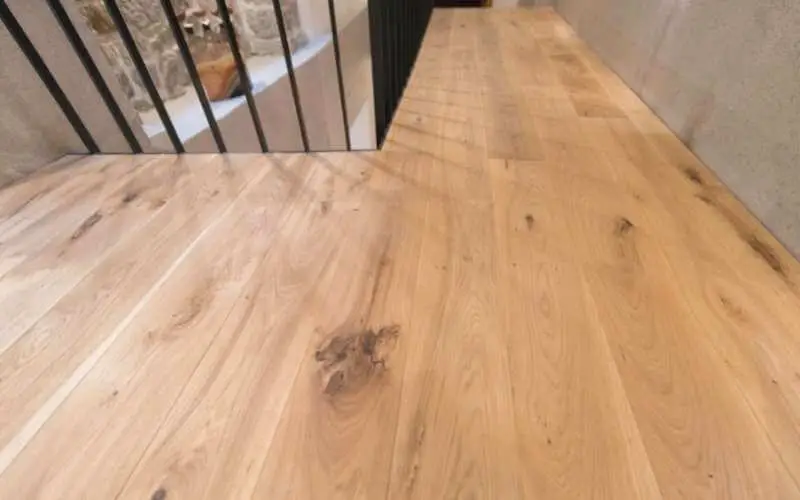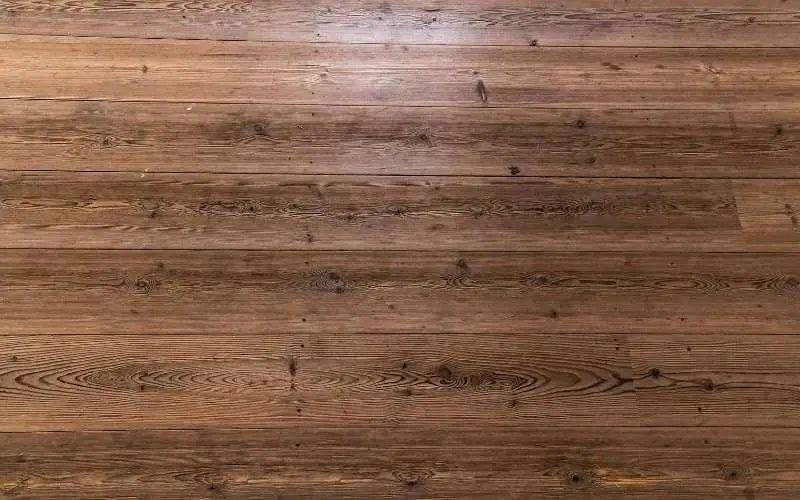Faded hardwood floors look unappealing and can further damage the board. If you’re faced with such a challenge, you may want to know how to fix faded hardwood floors.
Prepping, sanding the area, applying wood stain, and finally applying a sealant are best ways to fix faded hardwood floors.
Faded hardwood floors are usually caused by sunlight. Sunlight rays in a room may be beautiful but can fade hardwood floors.
Before we dive into how to fix faded hardwood floors, let’s look at the tools and materials needed.
Related: How Often Should You Refinish Hardwood Floors?
Tools and Materials Needed to Fix Faded Hardwood Floors
Table of Contents
Here are all you will need:
- Buffer
- Palm sander
- Vacuum cleaner
- Ear protection
- Protective gloves
- Knee pads
- Plastic sheeting and painter’s tape
- Clean rags
- Sandpaper
- Drum sander
- Edge sander
- Broom
- Tack cloth
- Wood stain
- Paint brushes
- Urethane sealant
- Lamb’s wool and natural-bristle brush
- Diagonal pliers
How to Fix Faded Hardwood Floors
Below outline are easy steps to fix discolored, faded hardwood floors:
Step 1: Inspect the Entire Floor.
It is easier to refinish the faded area only, but if you desire an even color, our candid advice is to carry out a thorough inspection of the whole floor.
This will also help you detect other common hardwood floor defects like crowning, cupping, or buckling.
Some wood like maple is known to be too difficult to sand. Therefore it is important to check the type of wood used on your floor (if you don’t know already) to determine if you will need professional help.
Step 2: Gather the Needed Tools and Materials
If you intend to complete the process yourself, then get all the tools and materials outlined in the previous subheading.
In addition to those tools, you will need to put on protective eyewear, gloves, and a dust mask while you’re fixing the faded hardwood floor.
Step 3: Get Your Floor Ready for Work
Take away everything lying on the floor, whether it is on the faded floor or not. You need enough space to fix the floor.
Sweep the floor thoroughly and ensure dust is removed. You can use a commercial wood filler to fill up any deep gouges.
Read: Can Fleas Live on Hardwood Floors?
Step 4: Sand the Faded Area until It’s Smooth.
You can cover your doorways and close vents to avoid dust from scattering your home. Wear your protective eyewear and a dust mask.
Now get to work! Sand the affected area until it’s smooth and all stains disappear.
You can use medium-grit sandpaper to make your work easier. Do not forget to vacuum up all the dust when you’re done sanding.
Step 5: Apply Wood Stain
Before you apply the wood stain, ensure the room is properly ventilated. This is because wood stains have very strong fumes and can remain in your room for days.
To get an even shade, you may have to mix different wood stains in a small container. It may be difficult to get a shade that matches the original one, but it’s worth the stress.
Don’t be in a hurry to paint; try a little bit of the stain on the affected area and check if it matches the original color. If it doesn’t, you may have to mix it all over again.
If you are okay with the color, you can stain the faded hardwood floor with the wood stain. Allow to dry overnight.
Step 6: Apply a Sealant
A sealant is used to block the passage of fluids through the surface or openings of a material.
We would recommend a water-based urethane sealant. Now use a paintbrush to apply it to the stained hardwood floor.
Allow the first coat to dry before applying a second one.
Do not walk or allow anyone to walk on the stained area for a day or two.
How to Protect Your Hardwood Floor from Fading
The combination of Uv radiation, humidity, and heat can cause fading of hardwood floors. To protect your hardwood floor from fading, you should use any of these preventive measures.
1. Keep Your Curtains and Window Blinds Closed
During summer, ensure your curtains or blinds are always closed. This will not only protect your hardwood flooring but also gives you privacy.
2. Upgrade your windows
Consider getting a laminated or Low-E coated glass window. Although these types of Windows are relatively expensive, they help filter harmful UV radiation to a great extent.
3. Use Window Film
To protect your hardwood floor from fading, you should consider using window films. Ensure you buy UV protection film
4. Apply a Sun-Resistant Sealant to Your Hardwood Floors
You may consider applying a sun-resistant sealant to your hardwood floors. You can use polyurethane, varnish, shellac, or lacquer. They are all effective in protecting floors from sun damage.
Read: Why Does my Carpet Look Worse After Cleaning
Conclusion
Exposure to sunlight can either lighten or darken certain types of hardwood. If you’re searching for how to fix faded hardwood floor, follow the instructions outlined in this article.
However, prevention is always a better option. We strongly advise you to follow the instructions outlined in this article to keep your hardwood floors and furniture protected.
We’ve come to the end of how to fix faded hardwood floors, and we believe we’ve done a great job outlining how.
We also believe this article is both helpful and informative; if you feel the same way, kindly share it across your social media pages.

